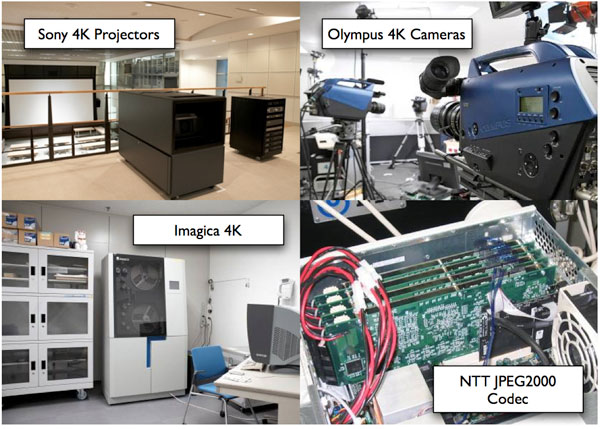After iGrid 2005, CineGrid arranged (through CENIC) a dedicated 1GigE circuit from San Diego, through Los Angeles, to the Bay Area and to Seattle so that CineGrid could provide 1GigE connections to research institutions and companies in those areas wanting to collaborate on networked media research and technology trials. CineGrid can also access EVL’s existing NLR capacity (called the CAVEWave) to upgrade CineGrid capacity to 10Gbps in order to leverage the 10GigE research links to Chicago, Washington DC, Toronto, Tokyo, Kyoto, Seoul, Taipei, Hong Kong, Amsterdam, Prague, Stockholm and, via GÉANT2, other locations in Europe.

The iGrid 2005 and subsequent demonstrations proved that networked production, post-production, and distribution of 4K digital cinema is not only technically feasible, but that the same infrastructure can be used to produce and distribute what Hollywood calls “other digital stuff,” or ODS, such as live music concerts, sports, and various content genres beyond traditional, theatrical-release feature movies. ODS is modestly named, but is actually a major growth market for 4K “beyond cinema,” destined to supplement Hollywood’s conventional movie-making. 4K is also expected to penetrate heavily into command and control, training simulation, collaborative computer-aided design, and product review engineering. CineGrid, in particular, will explore using networked 4K “nodes” for real-time, remote collaboration for training of next generation media professionals. In addition to the 4K SXRD projector available from Sony Electronics, in October 2006 Sharp announced a 64 inch 4K LCD panel, which will greatly accelerate wide adoption of 4K in conference rooms, classrooms, and laboratories.
A little over a year after the first CineGrid demonstrations, on October 8, 2006,* as part of the Audio Engineering Society (AES) annual conference, 2K and 4K digital motion pictures and 24-channel digital audio were streamed from three different locations (UCSD/Calit2, Keio /DMC, and USC/CNTV) in real-time using CineGrid networks, then mixed live for an audience of 200 audio and video professionals in the Premiere Theatre at the Letterman Digital Arts Center (LDAC) in San Francisco. This required extending CENIC’s CineGrid gigabit/sec optical circuit to the LDAC for the first time.






